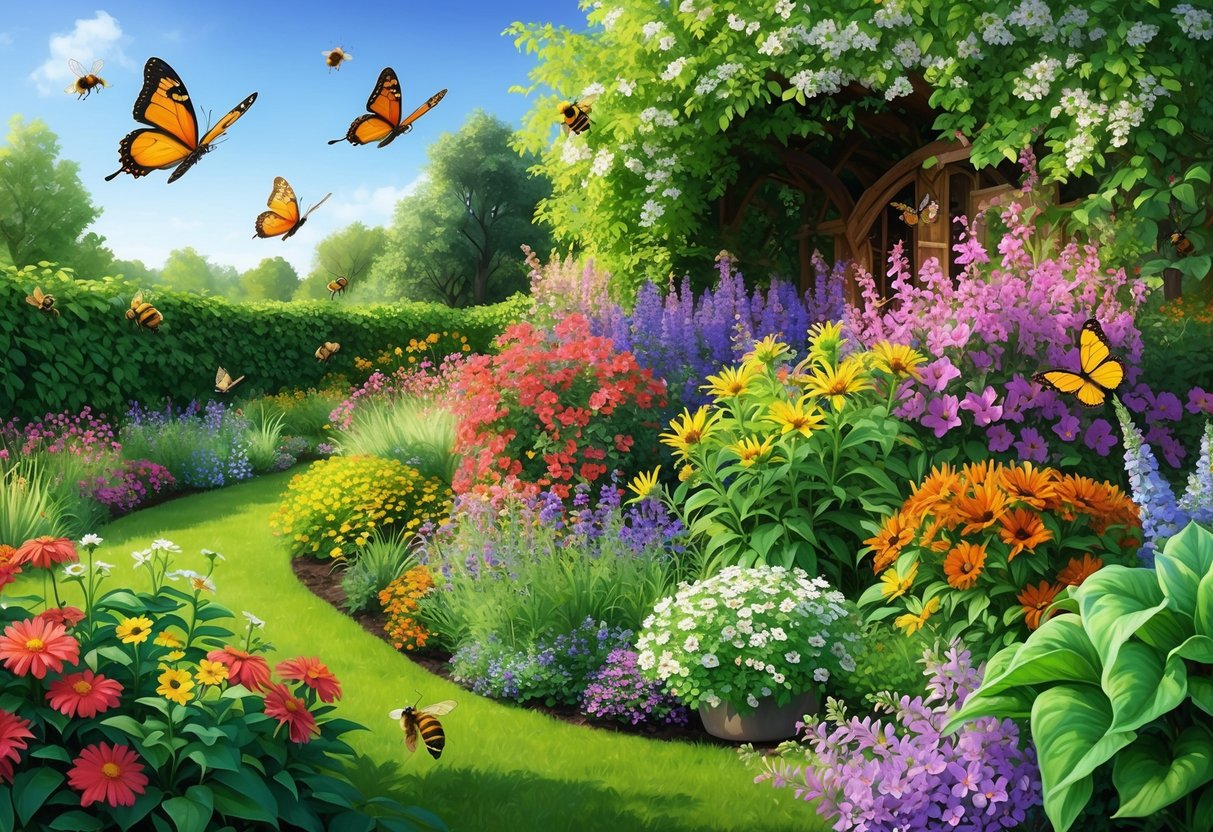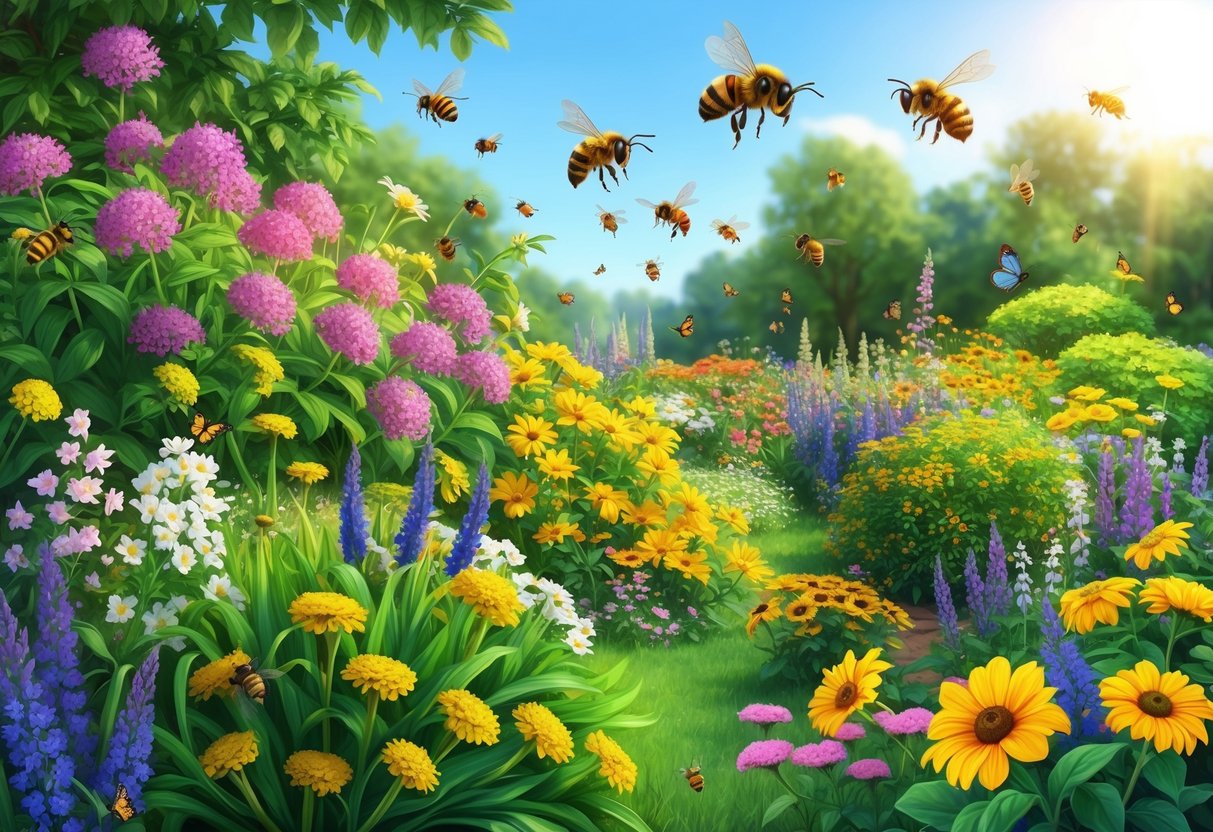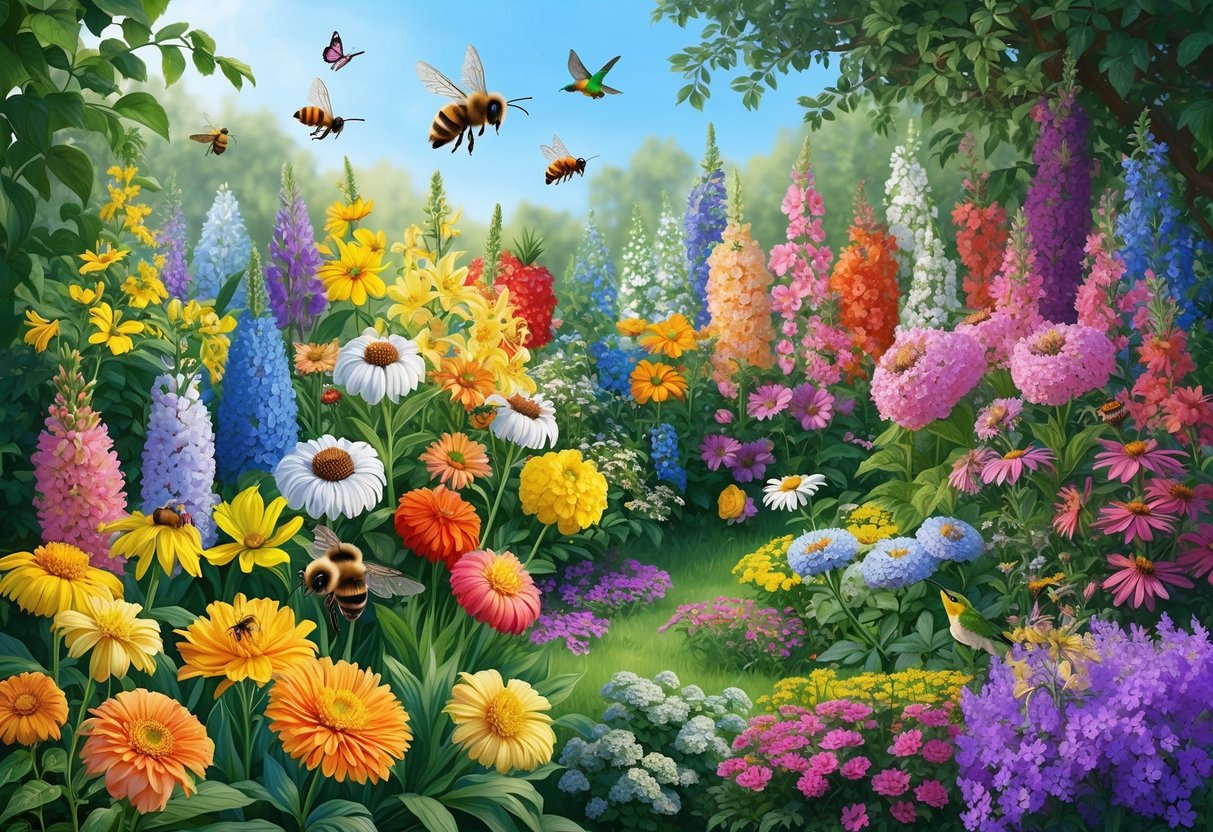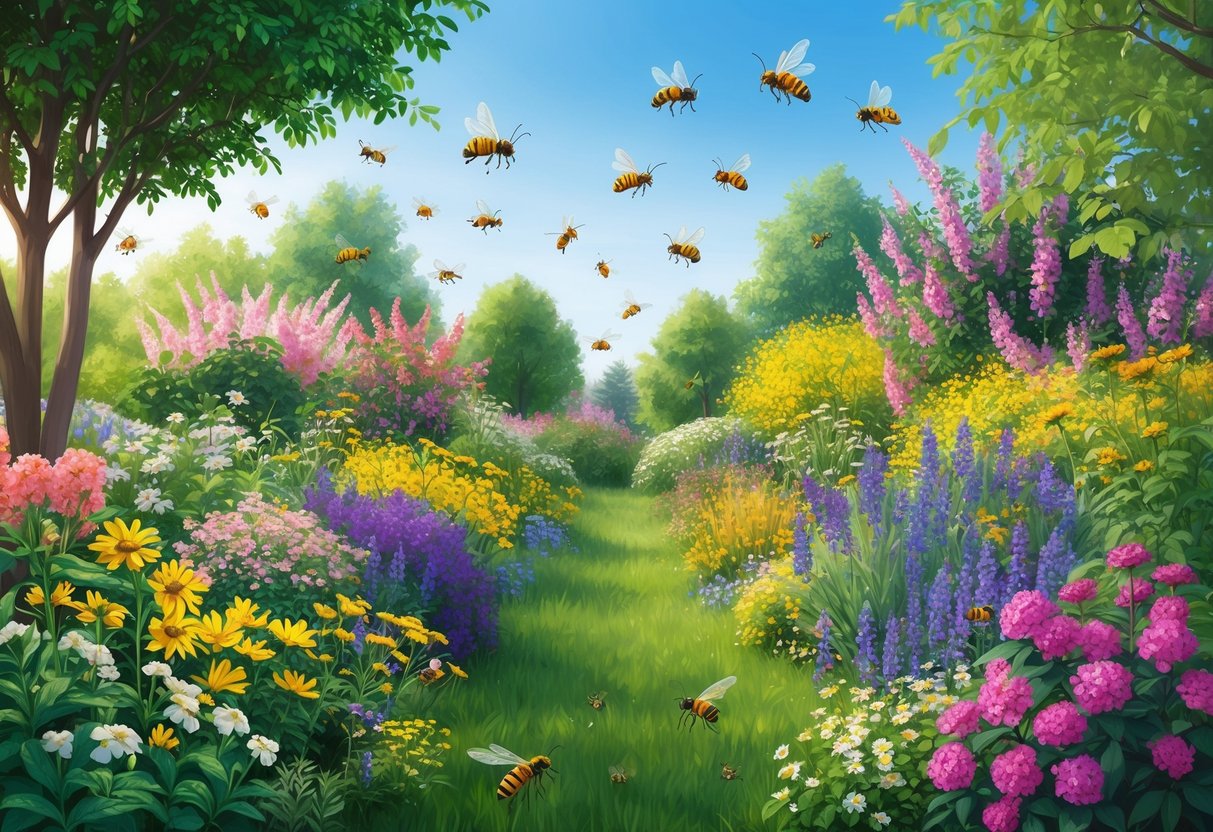
Garden Design Tips for a Pollinator Paradise

A healthy pollinator garden starts with thoughtful planting choices and smart site selection. Proper design delivers both an attractive landscape and better support for bees, butterflies, and other beneficial pollinators.
Creating Diverse Layers and Groupings
Layering plants by height creates natural spaces for pollinators to forage and hide. Place low-growing groundcovers, mid-height perennials, and tall flowering plants together.
This structure attracts a variety of species and ensures blooms at different heights are accessible to bees, butterflies, and hummingbirds. Grouping the same species in clusters of three to five increases visibility for pollinators and simplifies their search for nectar.
Clusters are easier for pollinators to find and provide efficient foraging. When planning a bee-friendly garden, incorporate a wide mix of native plants that bloom at different times through the season to provide a steady food source as recommended by expert guides on creating a pollinator paradise.
Avoid pesticides whenever possible, as they can harm insects vital for pollination. Interspersing fragrant flowers among vegetable beds can also increase crop yield and boost overall garden health.
Selecting Locations for Maximum Sunlight
Most flowering plants attract the highest number of pollinators when grown in full sun. Choose locations that receive at least six hours of direct sunlight per day, as many pollinator-friendly species—such as milkweed, coneflower, and bee balm—thrive in these conditions.
Sunlight not only enhances flower color but also attracts more active bees and butterflies during peak hours. Position taller plants to the north or east side of beds to prevent shading lower groups.
When planning a pollinator paradise, remember that sun-drenched beds will support stronger blooms and more frequent pollinator visits, as emphasized by planting guides like the Thrive Lot pollinator garden guide.
Regularly observe sun patterns and adjust planting areas as needed to maintain ideal light conditions year-round. This increases the odds of vibrant blooms and a bustling, diverse pollinator population.
Essential Maintenance for Flowering Plants

Providing proper care for flowering plants ensures healthy blooms and supports the bees, butterflies, and other pollinators visiting your garden. Success relies on thoughtful watering, creating a reliable water source, and maintaining fertile, well-structured soil with mulch and compost.
Watering and Providing a Water Source
Consistent watering keeps roots healthy and supports robust flowering. Early morning or late afternoon is best for watering, as it reduces evaporation and helps plants absorb moisture efficiently.
Deep watering every few days is better than frequent, shallow watering because it encourages roots to grow deeper. A dedicated water source benefits both plants and pollinators.
Placing a shallow bee watering station—a shallow dish with stones for landing spots—allows bees, butterflies, and other pollinators to drink safely. Regularly refill and clean these stations to prevent mosquito breeding, and keep them out of full sun to reduce water loss.
Drip irrigation or soaker hoses help deliver water directly to the soil, minimizing wet foliage and reducing disease risk. Avoid overhead sprinkling when possible as it can promote fungal disease in flowers.
Using Mulch and Compost Effectively
Mulch is essential for conserving soil moisture, suppressing weeds, and regulating soil temperature around flowering plants. Organic mulches like shredded bark, straw, or leaf mold break down over time, improving soil structure and enriching it with nutrients.
Apply a layer of 2-3 inches, but keep mulch away from plant stems to prevent rot. Compost is a critical organic amendment for pollinator gardens, as it boosts soil fertility and encourages vigorous growth.
Thoroughly mix compost into flower beds during garden prep, then renew it every year or as needed throughout the season. Use composted material that is fully broken down to avoid attracting pests.
Sustaining a Safe, Chemical-Free Habitat

Maintaining a pollinator-friendly habitat requires minimizing chemical use and creating conditions where beneficial insects thrive. Effective pollinator gardens depend on informed choices that protect bees, butterflies, and other wildlife from harm.
The Impact of Pesticides on Pollinators
Pesticides, particularly neonicotinoids and broad-spectrum insecticides, can have profound effects on local bee species and other pollinators. Potential outcomes include disorientation, weakened immunity, impaired reproduction, and in some cases, direct mortality for honey bees, bumblebees, and solitary bees.
In addition to reducing pollinator populations, excessive reliance on chemicals leads to a loss of beneficial insects that regulate pest outbreaks. Even pesticides labeled as “safe” or “natural” can pose risks if applied during bloom or in large quantities.
Experts recommend avoiding pesticide use in flowering gardens or using only as a last resort, and always following label instructions strictly. Simple practices such as hand-picking pests, using row covers, or watering plants early in the morning minimize the need for chemical controls.
By understanding which products and methods most affect pollinators, gardeners support healthier, more resilient habitats.
Encouraging Natural Pest Control
Relying on biocontrols can significantly reduce the risks chemicals pose to pollinators. Introducing or conserving predators like ladybugs, lacewings, and ground beetles provides a natural defense against pests such as aphids and mites.
Diverse plantings, especially native perennials like purple coneflower and bee balm, supply nectar and habitat for both pollinators and their predators. Leaving patches of bare ground, small brush piles, and undisturbed leaf litter further benefits ground-nesting bees as well as pest-eating insects.
Crop rotation, interplanting flowering herbs, and using companion planting techniques help break pest cycles and promote garden biodiversity.